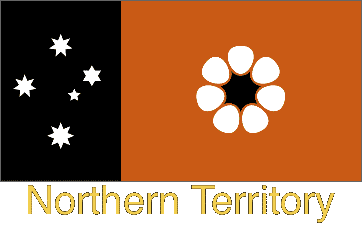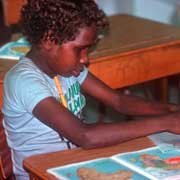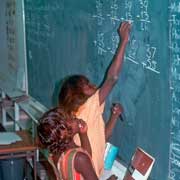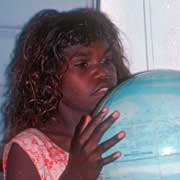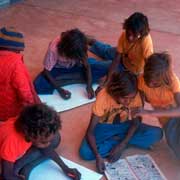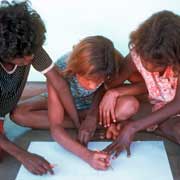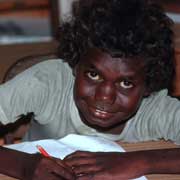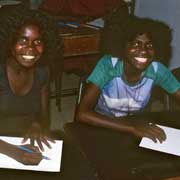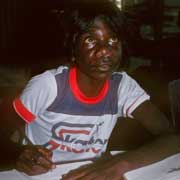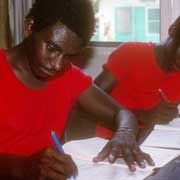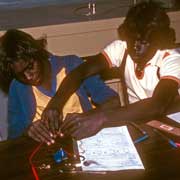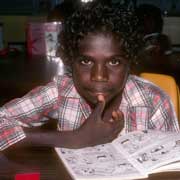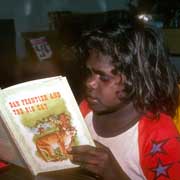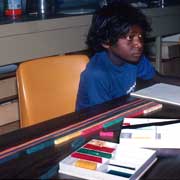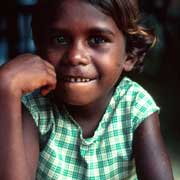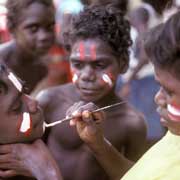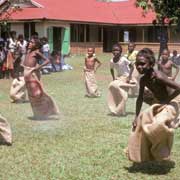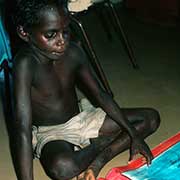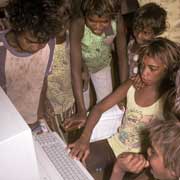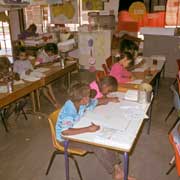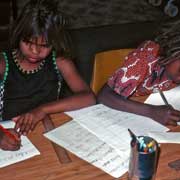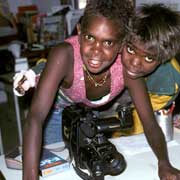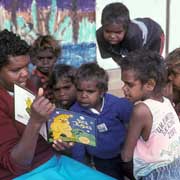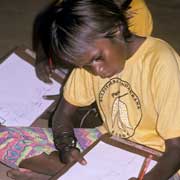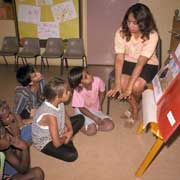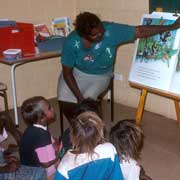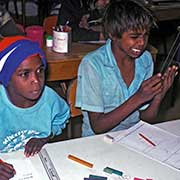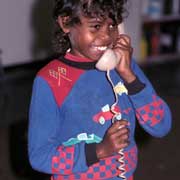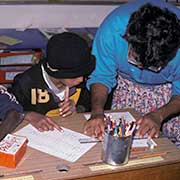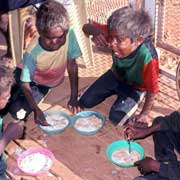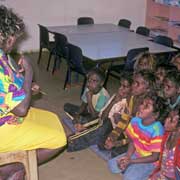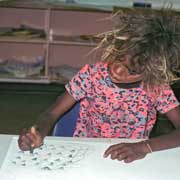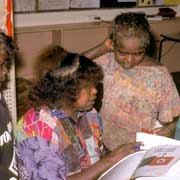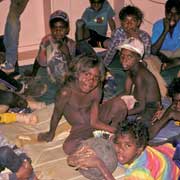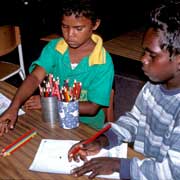Photos from Aboriginal Schools in the Northern Territory, Australia
Aboriginal Schools in the Northern Territory
As everywhere in Australia, school is compulsory in Aboriginal communities and most children enjoy going to school. All hub communities have schools with permanent buildings, staff and modern facilities. The various "Homeland Centres" or outstations have visiting teachers and local assistant teachers who will work with the children. Education in these places does not go beyond Primary level; the older children usually go to boarding schools in Alice Springs or Darwin.
you may then send it as a postcard if you wish.
Because going away from their own communities is often a hard thing to do for children, there have been some attempts to have junior High School classes in the communities themselves. Sometimes those is done with correspondence lessons. But eventually for higher education is becomes necessary to go elsewhere. There is a large drop-out rate however, and some children actually miss a lot of school. The literacy and numeracy level of indigenous children generally is well below that of the mainstream population.
In the eighties and nineties, when these photos were made, many schools had bilingual programs, where the children were taught to read and write in their own language first; English would be oral only until Grade 3. The idea was that the children would not have to learn to write in a language they couldn't speak. In practice however, in many places the traditional language was on the decline and children were actually speaking an Aboriginal form of English, or "Kriol", an English-based creole. The bilingual program was largely phased out, although in places where the traditional language is strong, like north-east Arnhem Land and remote Central Australia, there was strong resistance; it is still a subject of controversy. Most communities want bilingual education: language and culture belong together.
